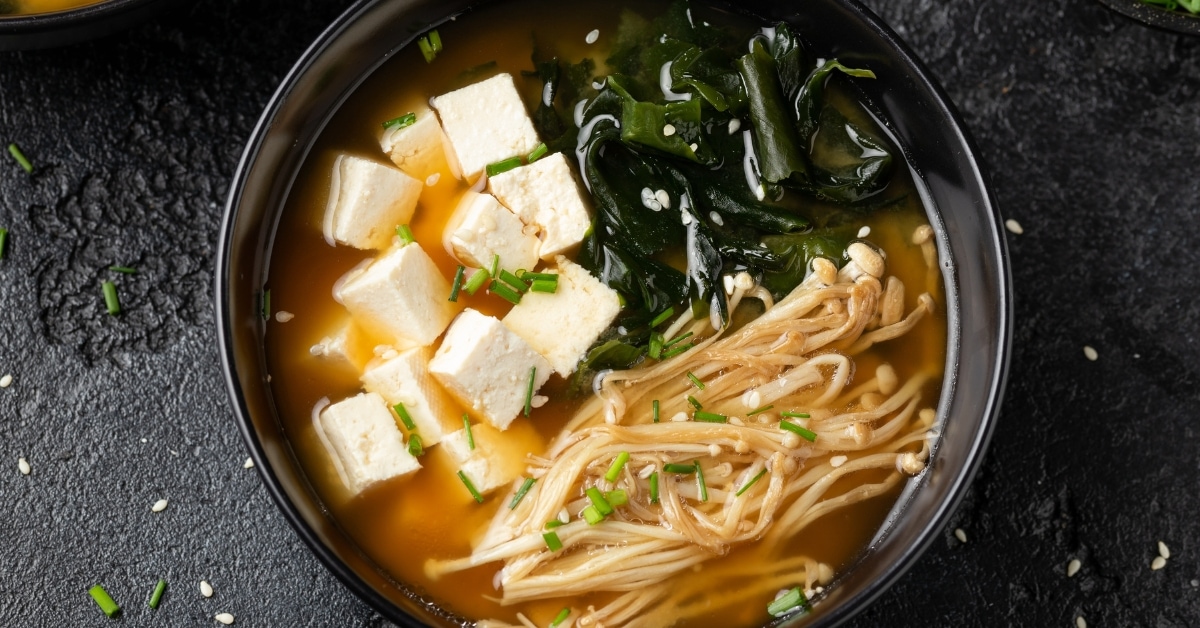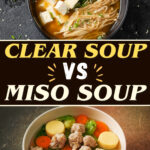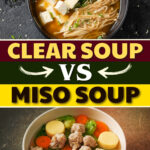Clear soup and miso soup originate from Japan and are known for their comforting and flavorful qualities.
But they’re different in terms of ingredients, taste and texture, culinary uses, and nutrition.
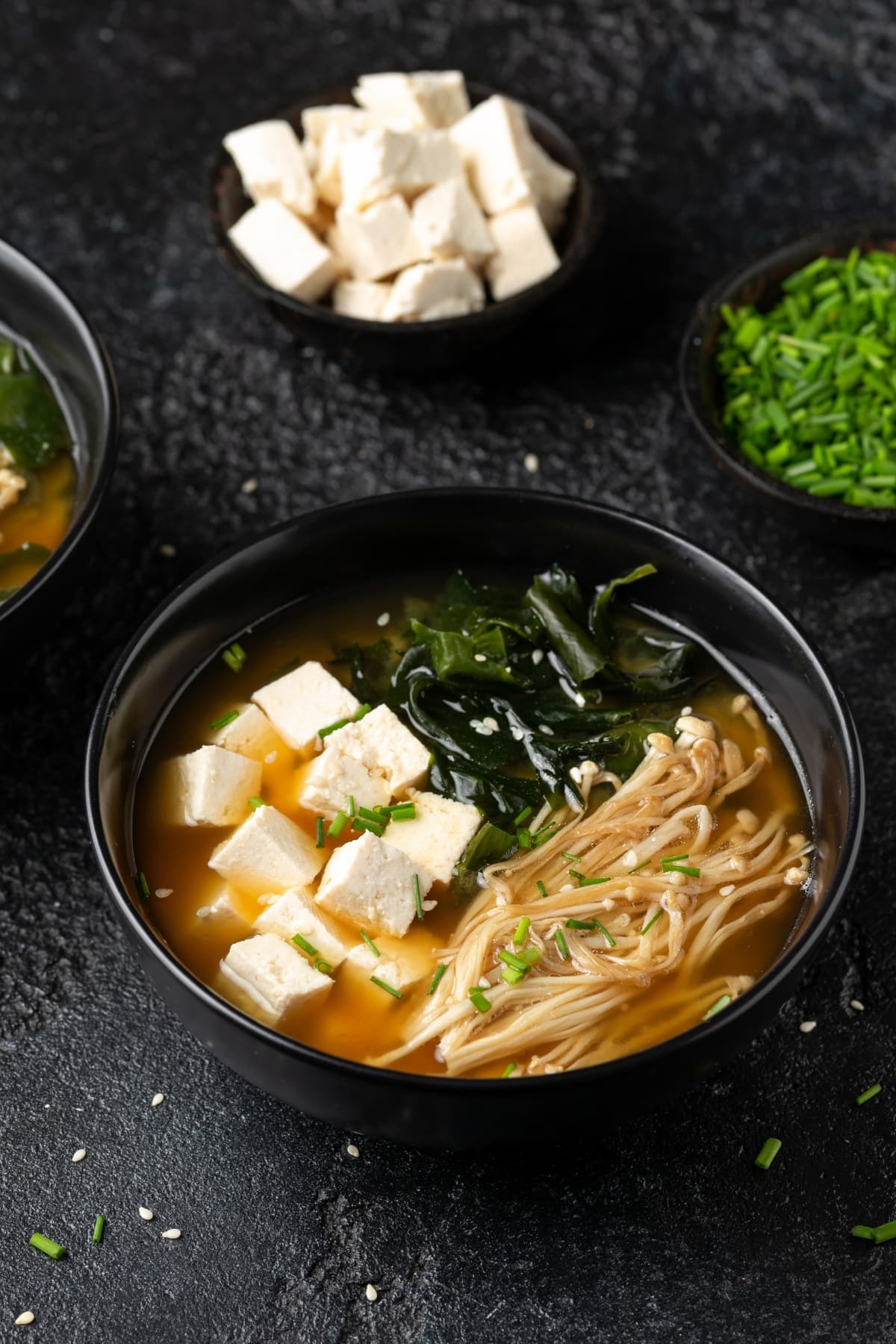
They also share a few similarities, including the fact they’re both broth-based soups.
From ingredients to flavors, let’s see which one is the best fit for your tastebuds.
Clear Soup vs. Miso Soup (What’s the Difference?)
Ingredients
- Clear Soup: Clear soup, as the name suggests, is a translucent broth-based soup. It typically consists of a clear and flavorful broth made by simmering vegetables, meats, and sometimes mushrooms. The ingredients are strained out, leaving a clean and simple soup base.
- Miso Soup: Miso soup is made with a fermented soybean paste called miso, which gives the soup its distinct flavor. It usually contains seaweed (wakame), tofu, green onions, and sometimes vegetables or seafood.
Taste and Texture
- Clear Soup: Clear soups have a light and delicate flavor. The taste primarily comes from the simmered ingredients. The texture is often more watery and less viscous compared to miso soup.
- Miso Soup: Miso soup has a deeper and more complex flavor due to the fermentation process of miso paste. It has a savory, salty, and umami-rich taste. The miso paste also lends a slightly thicker and heartier texture.
Culinary Uses
- Clear Soup: Clear soups are often served as a starter or palate cleanser in Japanese meals. They can also accompany main dishes, providing a light and refreshing contrast to more substantial flavors.
- Miso Soup: Miso soup is a staple in Japanese cuisine and is typically consumed as part of the main course. It’s commonly served alongside rice and other side dishes in traditional meals. It’s known for its comforting and satisfying nature.
Nutritional Differences
- Clear Soup: Clear soup is generally low in calories and can be quite hydrating due to its high water content. The nutritional value largely depends on the ingredients used in the broth. It has vitamins and minerals from vegetables and protein from meats.
- Miso Soup: Miso soup is rich in nutrients and probiotics due to the fermentation of miso paste. It provides protein, dietary fiber, vitamins (such as B cluster vitamins), and minerals (such as manganese and zinc). The soybean-based miso paste also offers health benefits associated with soy consumption.
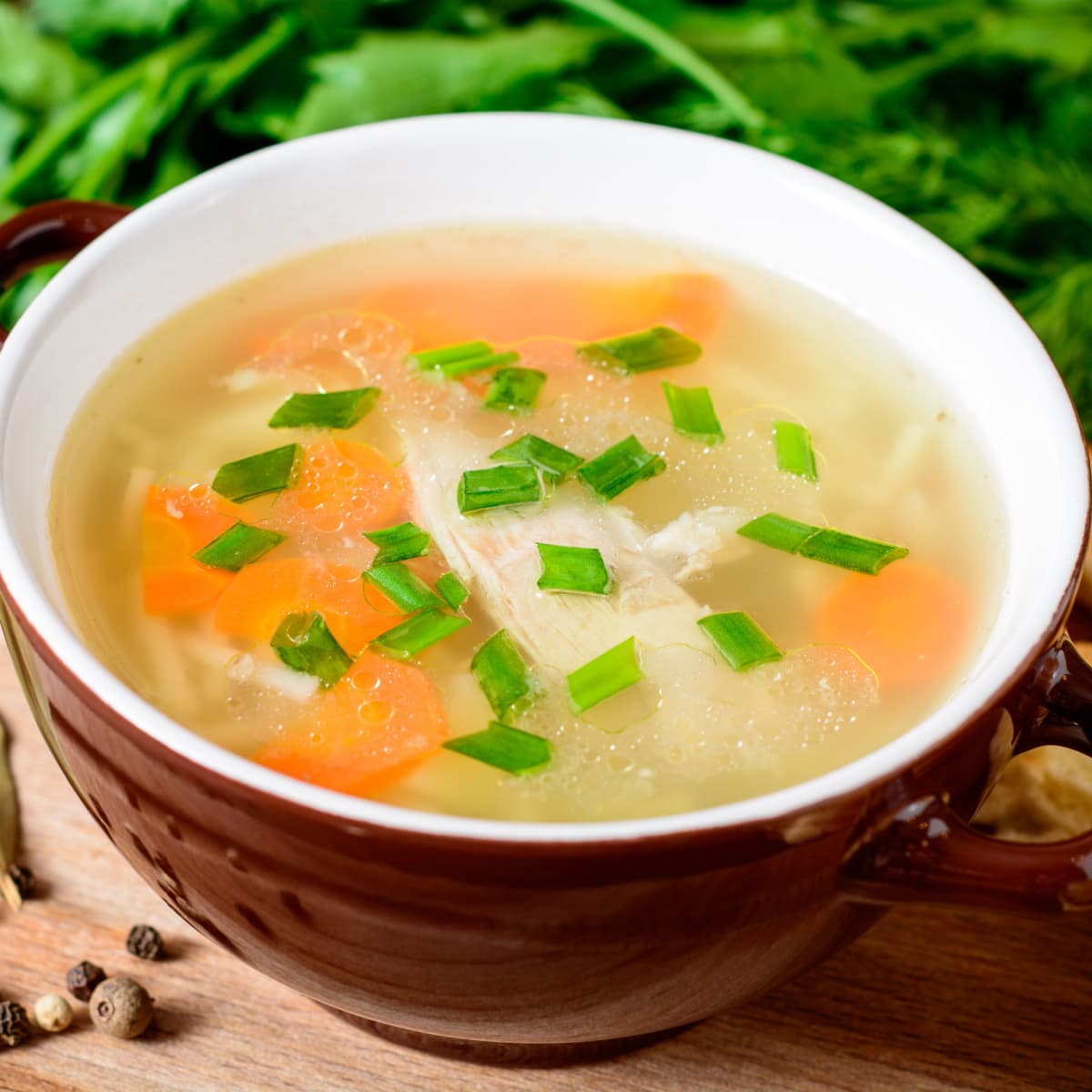
Similarities Between Clear Soup and Miso Soup
Clear soup and miso soup are both integral to Japanese cuisine.
They feature a broth base that contributes umami flavors and include ingredients like vegetables and tofu.
They complement each other in meals. Clear soup acts as a starter while miso soup accompanies main courses, offering warmth and comfort.
Both contribute to a balanced diet and potential health benefits.
What Is Clear Soup?
Clear soup is characterized by its translucent and flavorful broth.
It’s often made by simmering ingredients like vegetables and meats (such as chicken or seafood) in water or light stock. Sometimes, mushrooms are included.
The key feature of clear soup is its clarity. It’s achieved by straining out the solids and leaving behind a clear liquid.
This type of soup has a light and delicate flavor. Its taste primarily comes from the simmered ingredients.
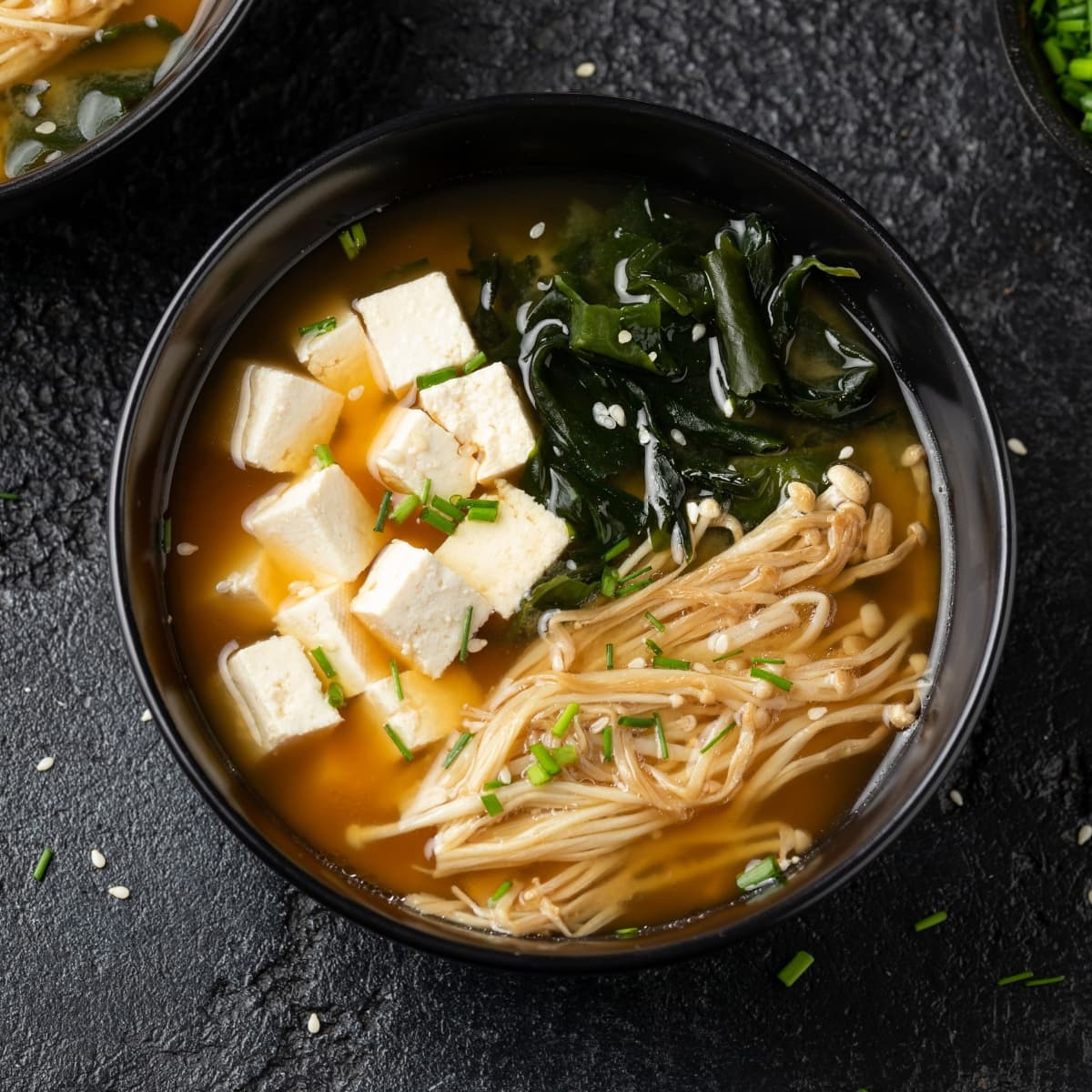
What Is Miso Soup?
Miso soup is a traditional Japanese soup made with a base of miso paste, which is a fermented soybean paste.
The paste is dissolved in a broth typically made from dashi.
Dashi is a Japanese stock made from bonito fish flakes and kombu (kelp).
Miso soup sometimes includes tofu, seaweed (wakame), green onions, and sometimes vegetables or seafood. However, in most cases, it’s vegan.
The fermented miso paste gives the soup its signature umami-rich and savory flavor.
Essential Ingredients for Making Clear Soup
To create a delicious and comforting bowl of clear soup, you need a few essential ingredients:
- Broth – A good-quality broth serving is the perfect base for clear soup. You can add vegetables, chicken, beef, or seafood broth, depending on your preference.
- Protein – Adding protein to your clear soup enhances its taste and nutritional value. Consider using thinly sliced chicken breast, shrimp, tofu, or even fish balls.
- Vegetables – Fresh vegetables add color, texture, crunch, and nutrients to clear soup. Popular choices include bok choy, mushrooms (shiitake or enoki), carrots, snow peas, and daikon radishes.
- Aromatics – Aromatic ingredients like garlic, ginger, scallions (green onions), and cilantro infuse the soup with wonderful flavors.
- Seasonings – Include seasonings like soy sauce or tamari for saltiness, mirin for sweetness, and a touch of sesame oil for depth.
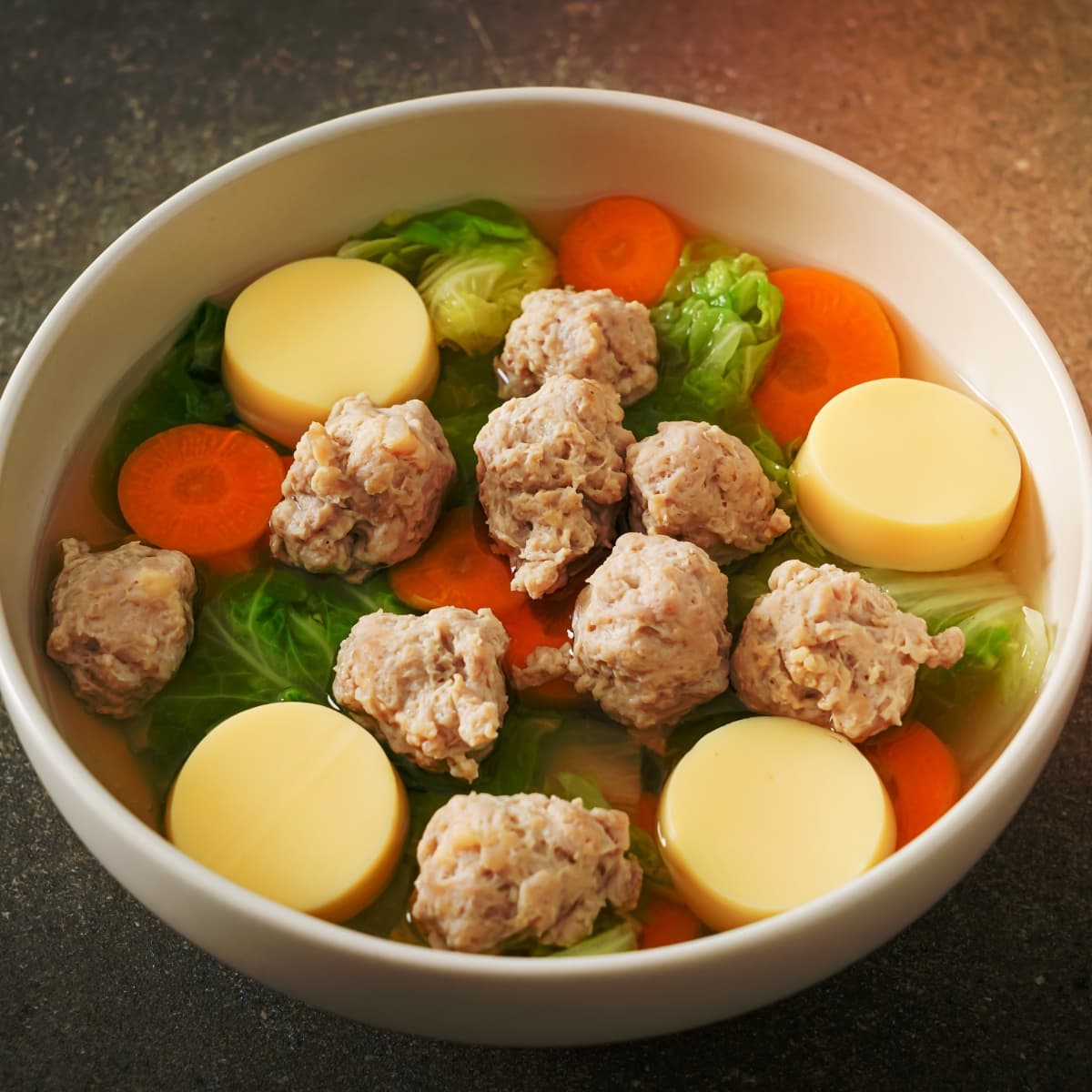
Essential Ingredients for Making Miso Soup
Miso soup is a traditional Japanese soup made from a few simple ingredients. The key ingredients are:
- Miso paste: This fermented paste gives the soup its signature flavor. The paste is typically made from soybeans. However, it can also be made from other grains and legumes. There are several varieties of miso paste, including white (shiro), red (aka), and mixed (awase), each with a unique flavor profile.
- Dashi – This is a basic Japanese soup stock made from ingredients like kelp (kombu) and bonito flakes (dried fish flakes). It provides the foundation of flavor for many Japanese dishes, including miso soup.
- Tofu – Soft or silken tofu is usually cut into cubes and added to the soup. This ingredient is optional and can be omitted if you prefer. Or, replace it with meats.
- Wakame – This is a type of seaweed that’s rehydrated and added to the soup.
- Green onions (scallions) – These are often chopped and added as a garnish to the soup.


